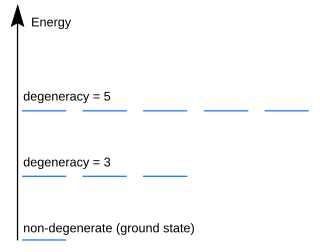It has been suggested that this article be merged with Self-sustainability . (Discuss) Proposed since April 2018. |
Self-sufficiency (also called self-containment) is the state of not requiring any aid, support, or interaction for survival; it is a type of personal or collective autonomy. [1] On a national scale, a totally self-sufficient economy that does not trade with the outside world is called an autarky.
In development or moral, political, and bioethical philosophy, autonomy is the capacity to make an informed, un-coerced decision. Autonomous organizations or institutions are independent or self-governing. Autonomy can also be defined from human resource perspective and it means a level of discretion granted to an employee in his or her work. In such cases, autonomy is known to bring some sense of job satisfaction among the employees. Autonomy is a term that is also widely used in the field of medicine. As a matter of fact, personal autonomy is greatly recognized and valued in health care.
An economy is an area of the production, distribution, or trade, and consumption of goods and services by different agents. Understood in its broadest sense, 'The economy is defined as a social domain that emphasize the practices, discourses, and material expressions associated with the production, use, and management of resources'. Economic agents can be individuals, businesses, organizations, or governments. Economic transactions occur when two parties agree to the value or price of the transacted good or service, commonly expressed in a certain currency. However, monetary transactions only account for a small part of the economic domain.
Autarky is the quality of being self-sufficient; the term is usually applied to political states or their economic systems. Autarky exists whenever an entity can survive or continue its activities without external assistance or international trade. If a self-sufficient economy also refuses all trade with the outside world then it is called a closed economy. The term "closed economy" is also used technically as an abstraction to allow consideration of a single economy without taking foreign trade into account – i.e. as the antonym of open economy. Autarky in the political sense is not necessarily an economic phenomenon; for example, a military autarky would be a state that could defend itself without help from another country, or could manufacture all of its weapons without any imports from the outside world.
Contents
Self-sufficiency is a type of sustainable living in which nothing is consumed other than what is produced by the self-sufficient individuals. Examples of attempts at self-sufficiency in North America include simple living, homesteading, off-the-grid, survivalism, DIY ethic and the back-to-the-land movement.
Sustainable living describes a lifestyle that attempts to reduce an individual's or society's use of the Earth's natural resources, and one's personal resources. Its practitioners often attempt to reduce their carbon footprint by altering their methods of transportation, energy consumption, and/or diet. Its proponents aim to conduct their lives in ways that are consistent with sustainability, naturally balanced, and respectful of humanity's symbiotic relationship with the Earth's natural ecology. The practice and general philosophy of ecological living closely follows the overall principles of sustainable development.

North America is a continent entirely within the Northern Hemisphere and almost all within the Western Hemisphere; it is also considered by some to be a northern subcontinent of the Americas. It is bordered to the north by the Arctic Ocean, to the east by the Atlantic Ocean, to the west and south by the Pacific Ocean, and to the southeast by South America and the Caribbean Sea.

Simple living encompasses a number of different voluntary practices to simplify one's lifestyle. These may include, for example, reducing one's possessions, generally referred to as minimalism, or increasing self-sufficiency. Simple living may be characterized by individuals being satisfied with what they have rather than want. Although asceticism generally promotes living simply and refraining from luxury and indulgence, not all proponents of simple living are ascetics. Simple living is distinct from those living in forced poverty, as it is a voluntary lifestyle choice.
Practices that enable or aid self-sufficiency include autonomous building, permaculture, sustainable agriculture, and renewable energy. The term is also applied to limited forms of self-sufficiency, for example growing one's own food or becoming economically independent of state subsidies. The self-sufficiency of an electrical installation measures its degree of grid independence and is defined as the ratio between the amount of locally produced energy that is locally consumed, either directly or after storage, and the total consumption. [2]
An autonomous building is a building designed to be operated independently from infrastructural support services such as the electric power grid, gas grid, municipal water systems, sewage treatment systems, storm drains, communication services, and in some cases, public roads.

Permaculture is a set of design principles centered around whole systems thinking simulating or directly utilizing the patterns and resilient features observed in natural ecosystems. It uses these principles in a growing number of fields from regenerative agriculture, rewilding, community, and organizational design and development.

Sustainable agriculture is farming in sustainable ways based on an understanding of ecosystem services, the study of relationships between organisms and their environment.




